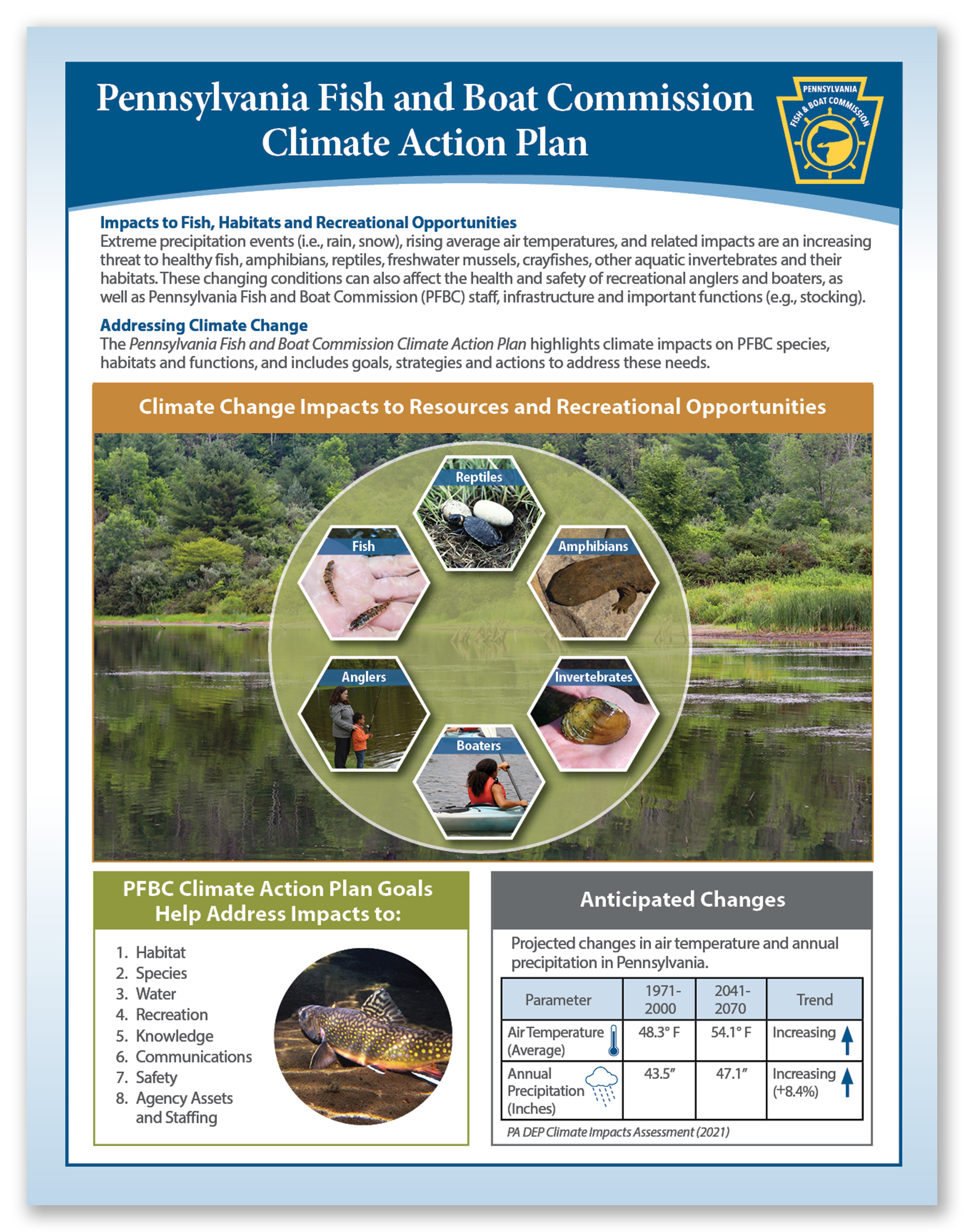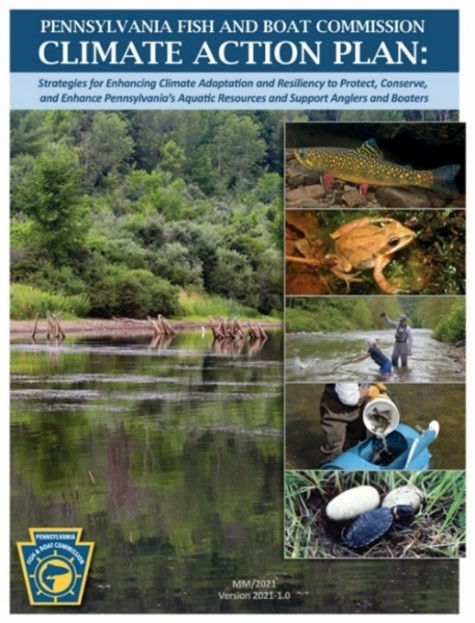CLIMATE ACTION PLAN
Healthy fish populations and habitats are crucial to Pennsylvania's natural heritage yet are currently impacted by changing precipitation and temperature. These changes are anticipated to increase in the future.
Among vital habitats needed to support these healthy populations is clean, safe water with minimal impacts to property during high-flow, and which is readily available during low-flow periods.
Changing precipitation and temperature will affect recreation, but the PFBC is committed to providing safe and accessible angling and boating opportunities. The Climate Action Plan outlines how this will be accomplished.
This plan highlights anticipated impacts from climate changes and provides a framework for the PFBC to support healthy fisheries and provide safe angling and boating opportunities.
For a brief overview, see the Climate Action Plan Fact Sheet. For more details see the PFBC's full Climate Action Plan.


POTENTIAL IMPACTS
Fisheries
- Warmer water temperatures can change the types of fish found in a water body
- Extremely high or low water levels can harm fish spawning and survival of young fish
- Larger and more frequent storms can wash greater amounts of soil, debris, and pollutants into waterways making them less healthy for fish
- Storm events can significantly change the bottom of lakes and streams – either by scouring the bottom or through buildup of excess silt, sand and gravel – which in turn may reduce food sources for fish
- Changes in trout stocking strategies may be required due to earlier spring warming
- Decreased water clarity and changes in spring flows can impact availability of fish food
Frogs, Toads, Salamanders, Snakes and Turtles
- Higher water levels could reduce suitable wetland habitats and harm populations
- Changes in land habitats could affect populations
- Stress from extreme heat and drought could make animals more susceptible to diseases, particularly young frogs, toads, and salamanders
Angler and Boater Recreation
- Anglers and boaters may see increased safety risks due to extreme heat, flash floods, damaging winds, and lightning
- Extremely warm early-spring and late-fall air temperatures can betray dangerously cold water temperatures and put boaters at risk of hypothermia or drowning
- For boaters, low water levels associated with drought can create new underwater hazards that didn't exist under normal water levels
- Fishing opportunities for popular sportfish, such as native brook trout, could be reduced or lost
- Warmer weather can decrease or eliminate safe ice for winter fishing
RESOURCES
Pennsylvania
Northeast Region and National